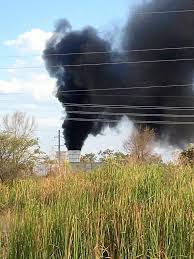
Who can break their Obligations and Duties under the Queensland Coal Mining Act and never be prosecuted? The CEO of RSHQ?
It has been explained to me and demonstrated in writing that the Chief Executive , the CEO of RSHQ (Resources Safety and Health Qld) is one person who is effectively immune from Prosecution for breaching their “MUST” Obligations and Duties under the CMSHA 1999.
https://www.legislation.qld.gov.au/view/pdf/inforce/current/act-1999-039
The position of CEO is arguably the most Senior position/person under the CMSHA. the Chief Executive is mentioned over 50 times in the body of the Act and has about a dozen Sections where it says what the Chief Executive “must” do and a further 14 where the CEO “may” do.
The majority of the things that the Chief Executive “must” do concern the appointment of Inspectors. Inspection Officers and others and the issuing of their “identity card”.
The “Must” example in question is Section 280 which states the records that the CEO must keep. The relevant part of the clause is about the CEO keeping a database of High potential Incidents and making the Primary Information available on request by a “person” after payment of a reasonable fee.
280 Chief executive to keep records
- The chief executive must keep and maintain records that include—
a) a database of information about—
i) hazards associated with coal mining operations and methods of controlling the hazards; and
ii) lost time injuries and high potential incidents; and
4) The chief executive, on payment by a person of a reasonable fee decided by the chief executive, must give a person access to the records.
To keep a long story short, I applied about a month ago for access to the HPI Primary Information for Spontaneous Combustion in Underground Coal Mines and for Inrush HPI’s, and asked what the reasonable fee.
The CEO Stone refused to even acknowledge my requests despite several attempts over nearly 3 weeks. My correspondence for the later communications also included the Commissioner of Mine Safety and the Chief Inspector of Coal Mines.
It was only after I lodged a complaint and request for CEO Mark Stone to be investigated by and for
- the Office of Workplace Safety and Health Prosecutor to commence a prosecution for an offence against the CMSHA 1999.
- The Public Service Commission for official Misconduct
- Through the internal RSHQ complaints policy for the CEO under section 48A of the Crime and Corruption Act 2001
I have not heard anything from the Public Service Commission about my misconduct complaint
OWSHP Prosecution Request
The OWSHP prosecutor told me that they could not address my complaint and recommendation to prosecute mainly because there are only a very limited number of persons/position holder who can recommend a prosecution.
- A proceeding for an offence against this Act may only be taken by—
- the commissioner; or
- the chief executive; or
- another appropriately qualified person, with the written authorisation of the chief executive, either generally or in a particular case.
So even if the Chief Executive Officer was in gross and negligent breach of their Obligations, they are not going to recommend themselves for prosecution
Corruption Complaint
The internal RSHQ complaints officer rejected my complaint.
The Complaints Officer also .told me besides that someone from RSHQ would be in contact with me to address my request.
Suffice to say they can tell me how many respective spontaneous combustion and inrush HPU’s there have been since 2000 for free if I like
Even though they then must know what mine and when the events occurred they keep insisting , I am continually asked to be more specific.
After I already limited the mines to include Newlands, North Goonyella, Moranbah North, Carborough Downs, Ensham and Cook Colliery I then got this in reply
The CEO is required to keep and maintain records that include a database of information about high potential incidents. The records contained within the database are extensive and the database requires a level of interrogation to identify and produce relevant records and extract information that is not able to be disclosed under law.
we ask that you identify the particular information you are seeking about the spontaneous combustion and inrush HPIs that are captured within the timeframe you have identified.
As I have pointed out to my friends at RSHQ, despite the best/worst efforts by management being unable to prevent underground out of control spontaneous combustion events, they do not occur every week and it is the CEO’s responsibility to collate the information as required, not mine
The other major problems with holding the CEO to account for breaching their Obligations and Duties under the CMSHA 1999 are
- Section 280 doesn’t create an offence capable of being prosecuted.
- There are no Maximum Penalty Points referenced in Section 280 or any of the other 54 Sections mentioning the Chief Executive.
- Section 280 does not outline a timeframe for response.
- The provisions of and wording of “Division 2 Operation of Act 3 Act binds all persons” where it states “Nothing in this Act makes the State liable to be prosecuted for an offence.”
- The only possible action would be possible via a civil negligence case brought by a worker suffering a permanent disability under Section 276
I was further told
To invoke the procedure provided for in s.256B of the Act, a request must concern a ‘serious offence’,
as defined in s.255(10) of the Act.
The circumstances you have described do not, in my view, disclose the commission of any offence
against the Act
Section 54 deals with the Operator appointing the SSE sets out a typical example.
54 Appointment of site senior executive
- A coal mine operator for a coal mine or for a separate part of a surface mine must not appoint more than 1 site senior executive for the mine or for the part for which the person is coal mine operator.
Maximum penalty—500 penalty units.
A penalty unit is currently $143 per Unit.
Therefore the maximum penalty is $71,500
As it has been pointed out to me Governments do not normally have provisions for Officers of the Crown/Government to be subjected penalties or prosecution for non compliance.
It seems that the CEO of RSHQ even with all of the “must” do obligations, duties and responsibilities is almost totally free to comply when and how he likes except, for the appointment of Inspectors and identity card provisions.
Even if the CEO did not comply it would not be viewed as a serious offence and I have been told that for legal purposes under the Act, the CEO does fall under Section 39 and 34 of the Act
39 Obligations of persons generally
(1) A coal mine worker or other person at a coal mine or a person who may affect the safety and health of others at a coal mine or as a result of coal mining operations has the following obligations—
(a) to comply with this Act and procedures applying to the worker or person that are part of a safety and health management system for the mine;
(b) if the coal mine worker or other person has information that other persons need to know to fulfil their obligations or duties under this Act, or to protect themselves from the risk of injury or illness, to give the information to the other persons;
(c) to take any other reasonable and necessary course of action to ensure anyone is not exposed to an unacceptable level of risk.
34 Discharge of obligations
A person on whom a safety and health obligation is imposed must discharge the obligation.
Maximum penalty—
a) if the contravention caused multiple deaths—2000 penalty units or 3 years imprisonment; or
b) if the contravention caused death or grievous bodily harm—1000 penalty units or 2 years imprisonment; or
c) if the contravention caused bodily harm—750 penalty units or 1 year’s imprisonment; or
d) if the contravention involved exposure to a substance that is likely to cause death or grievous bodily harm—750 penalty units or 1 year’s imprisonment; or
e) otherwise—500 penalty units or 6 months imprisonment.
To leave it beyond doubt Section 276 Protection from Liability specifies that normal Industrial compliance/negligence provisions do not apply to “Officers” under the CMSHA 1999 and only civil action for death and permanent incapacity compensation claims can apply
276 Protection from liability
a) An official does not incur civil liability for an act done, or omission made, honestly and without negligence under this Act. Example of an act done— giving information or advice
b) If subsection (1) prevents a civil liability attaching to an official, the liability attaches instead to the State.
Civil Liability is one of being able to sue for financial compensation, this only for a Workers Compensation assessed and accepted permanently disabling workplace injury where a case of negligence can be found and proved.
- A duty of care must have been owed to the victim;
- The duty of care must have been breached; and.
- The breach of the duty must have resulted in some damage or injury to the victim.


